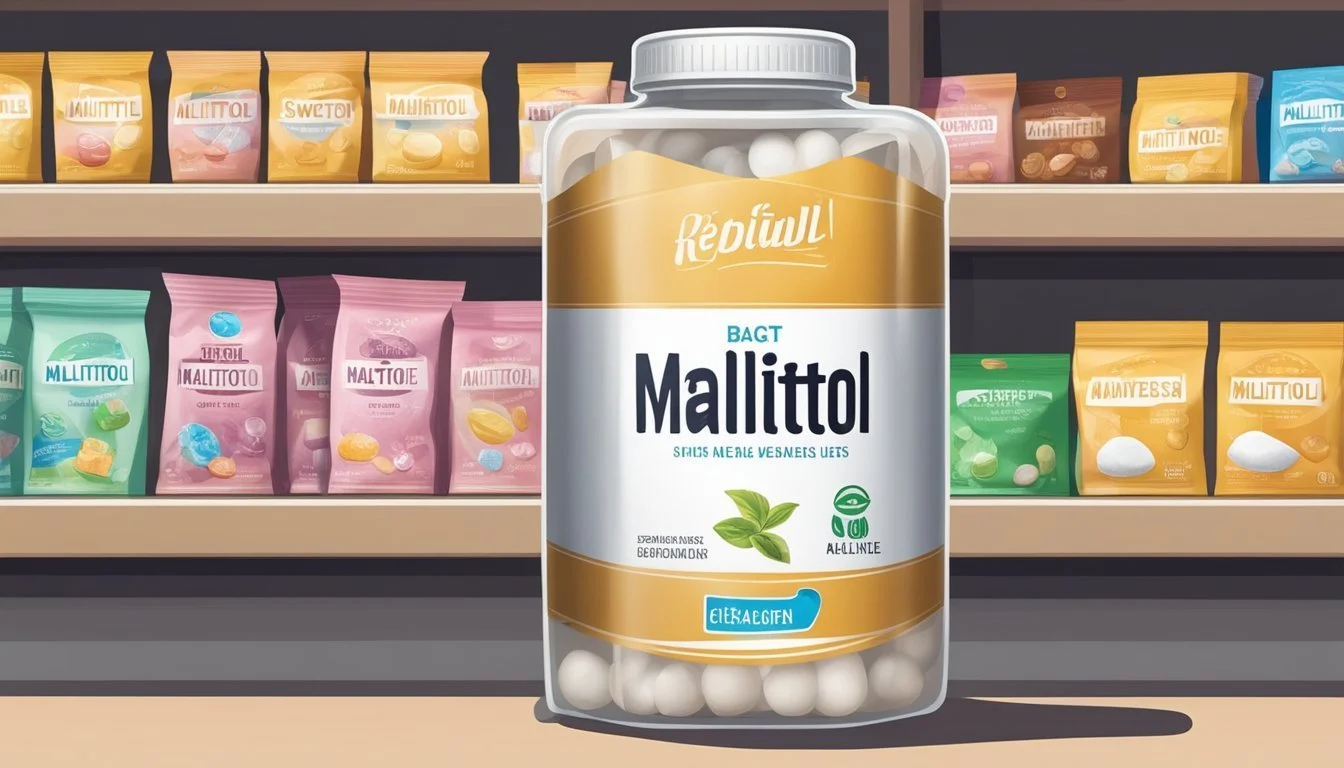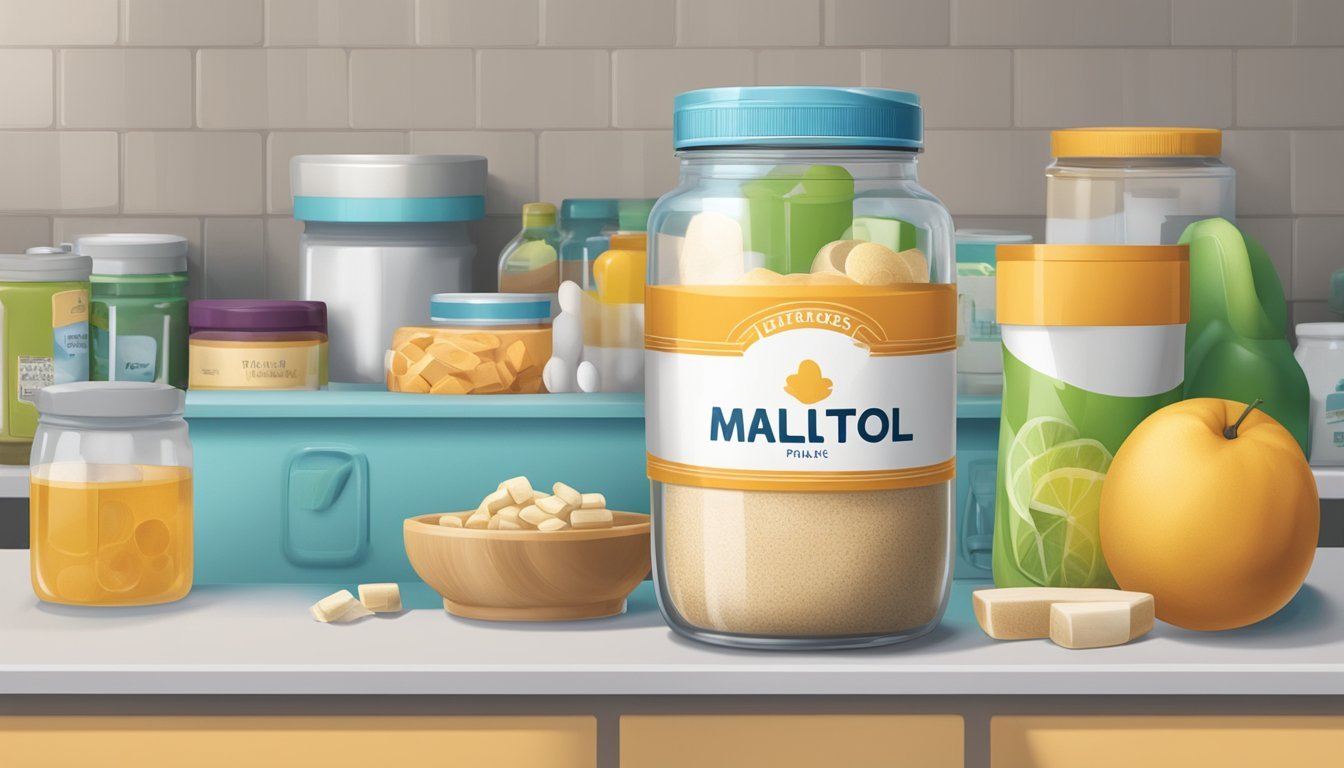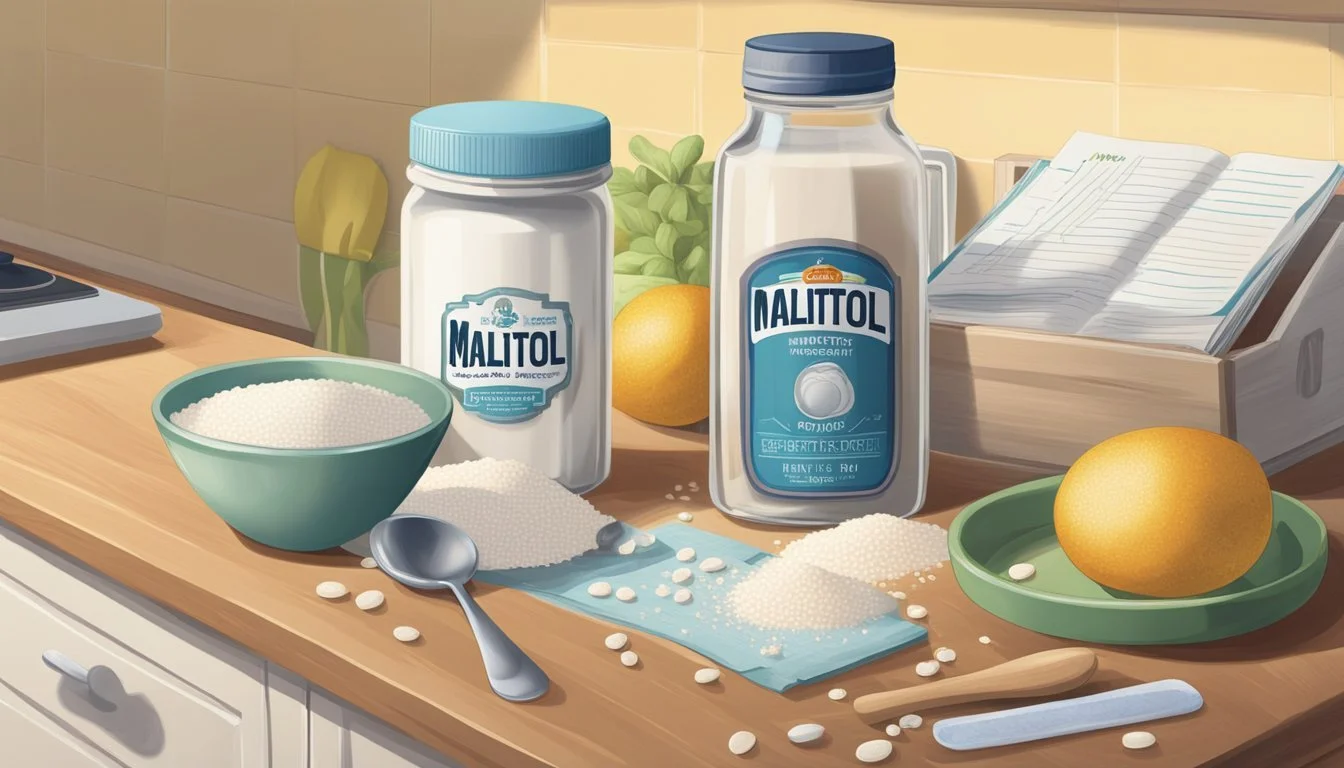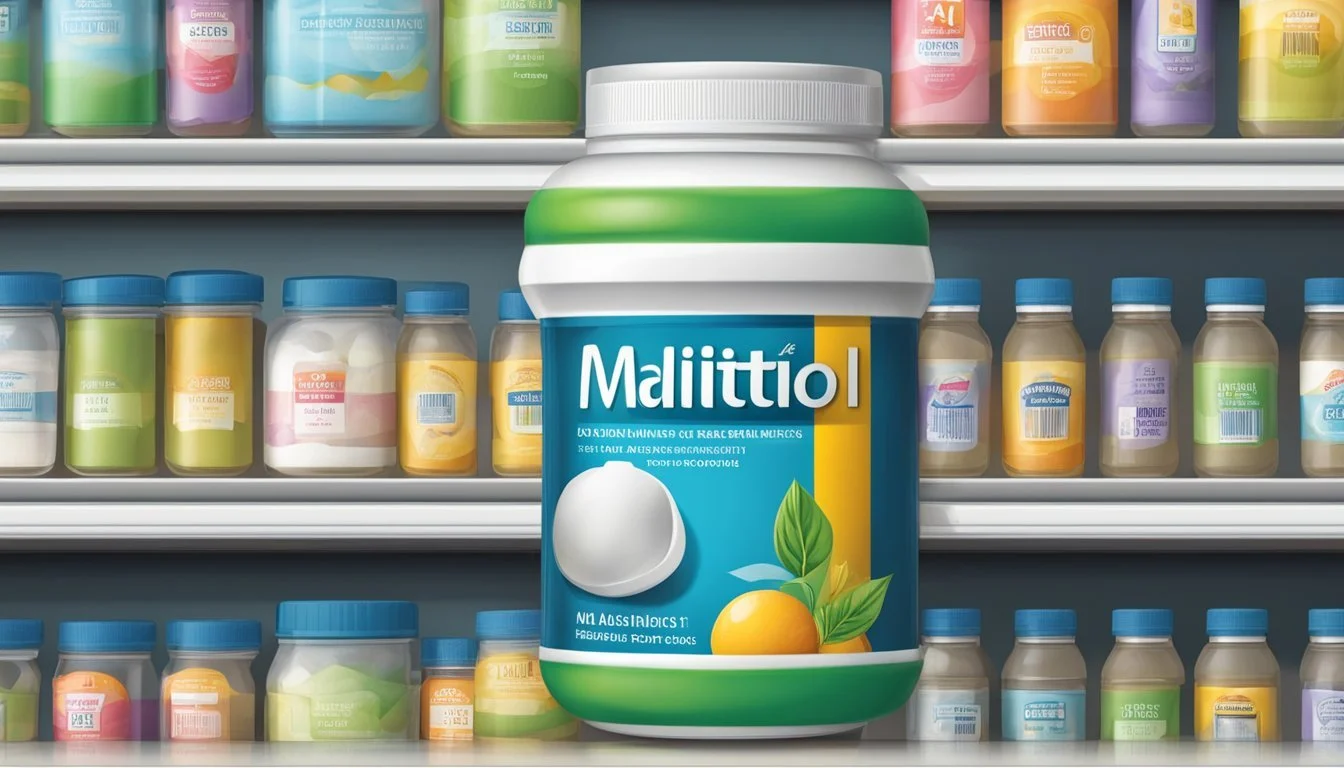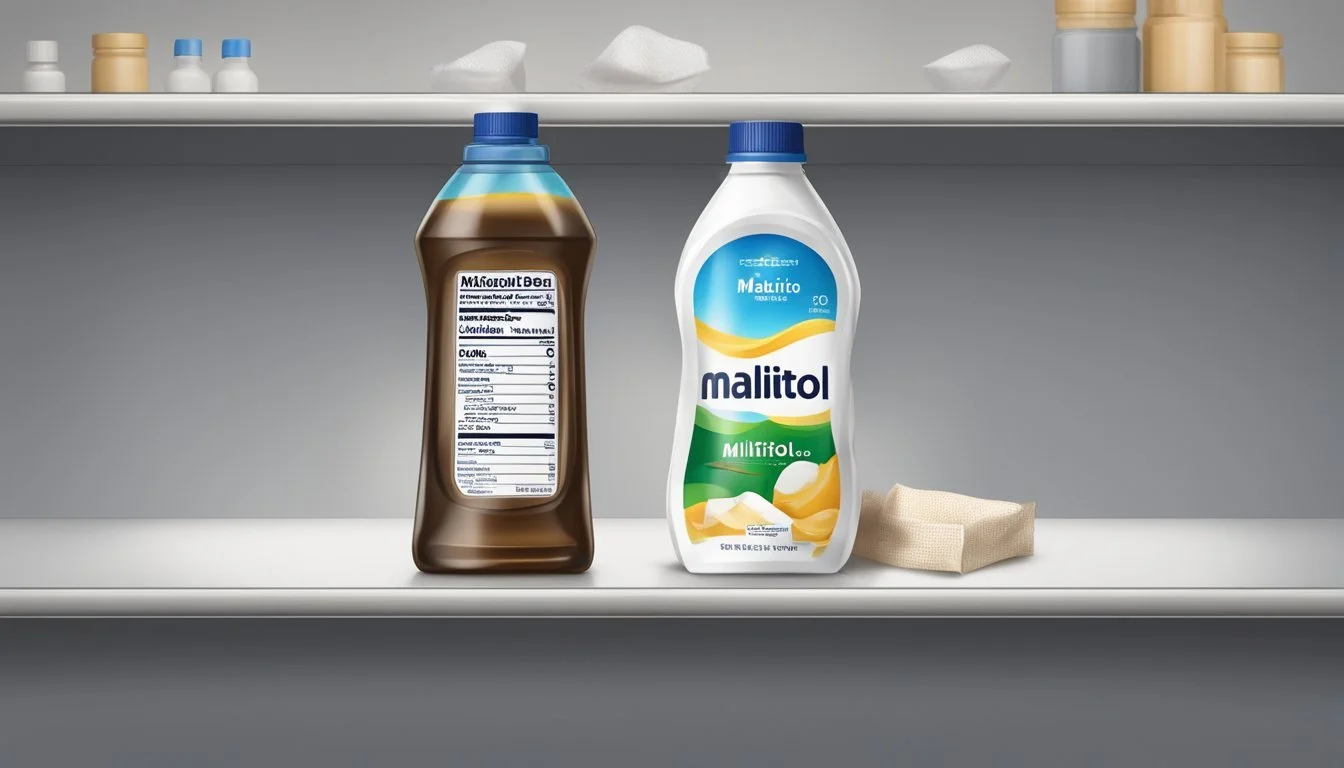Does Maltitol Go Bad?
Storage Tips and Shelf Life Explained
When exploring the shelf life of maltitol, a common question arises: does maltitol go bad? Maltitol, a popular sugar substitute found in many sugar-free and low-calorie foods and drinks, is a type of sugar alcohol. Like other sugar alcohols, it has a stable chemical structure, meaning it doesn't spoil in the traditional sense like perishable foods.
Maltitol does have an extended shelf life and generally remains effective and safe to consume for a long time when stored properly. Proper storage involves keeping it in a cool, dry place, away from direct sunlight and moisture, which can help maintain its quality. Over time, however, the taste and sweetness might diminish, but this does not mean it has gone bad; it merely indicates a potential decrease in flavor potency.
For those using maltitol as a sugar alternative, its stability is a significant benefit, ensuring that products containing this sweetener remain usable for extended periods. This quality makes maltitol a reliable option for individuals looking to reduce sugar intake without compromising on longevity.
Understanding Maltitol
Maltitol is a sugar alcohol used as a low-calorie sweetener in various sugar-free foods. It has unique characteristics that set it apart from other sugar substitutes in terms of chemical properties, caloric content, sweetness, and natural sources.
Chemical Structure And Properties
Maltitol belongs to the category of sugar alcohols, also known as polyols.
Chemically, it's produced by the hydrogenation of maltose, a disaccharide derived from starch. It has a chemical formula of C12H24O11, indicating it contains hydrogen, carbon, and oxygen atoms. The hydrogenation process converts the glucose component of maltose into a sugar alcohol, affecting its digestibility and physiological impact.
The polyol nature of maltitol means it has a reduced impact on blood glucose levels compared to regular sugar, making it suitable for people managing their glycemic index.
Maltitol Vs. Other Sweeteners
Maltitol is frequently compared with other sugar substitutes, including xylitol, sorbitol, and erythritol.
Xylitol is equally sweet but has a cooling effect and more calories. Sorbitol is less sweet and can cause more digestive issues. Erythritol has almost zero calories but only 70% of the sweetness. Maltitol stands out for being about 90% as sweet as sugar with fewer calories, making it an attractive choice for many sugar-free products.
Caloric Content And Sweetness
Maltitol provides about 2.1 calories per gram, which is roughly half the calories of regular sugar, which contains around 4 calories per gram. This reduced caloric content is a significant advantage for those looking to lower their calorie intake without sacrificing sweetness.
In terms of sweetness level, maltitol is approximately 90% as sweet as sucrose. This near equivalence in sweetness allows it to substitute sugar in recipes without requiring major adjustments to the quantity used.
Natural Sources And Production
Maltitol is naturally found in small amounts in certain fruits and vegetables, such as chicory leaves and roasted malt.
However, the commercial production of maltitol typically involves the fermentation and hydrogenation of starch, usually derived from corn or wheat. The fermentation breaks down starch into maltose, which is then hydrogenated to produce maltitol. This process ensures a consistent and high-purity product suitable for use in food manufacturing.
Maltitol's natural occurrence and the controlled production process contribute to its status as a reliable sugar substitute in numerous applications.
Health Effects Of Maltitol
Maltitol, a sugar alcohol, serves as a low-calorie sweetener and sugar substitute. While it offers benefits like reduced calorie intake and potential dental health improvements, it also has drawbacks, including digestive issues and its impact on blood sugar levels.
Blood Sugar Impact And Diabetes
Maltitol contains fewer calories than sugar and has a lower glycemic index.
However, it still affects blood sugar levels, unlike some other sugar alcohols like erythritol.
People with diabetes should monitor their intake of maltitol due to its potential to raise insulin levels.
Its glycemic index is around 52, which is moderate compared to sugar.
Digestive Considerations And Side Effects
Large consumption of maltitol can lead to gastrointestinal issues.
Common side effects include bloating, flatulence, and diarrhea due to its laxative effects.
Starting with small amounts can help avoid these adverse reactions.
Sensitive individuals may experience significant discomfort even with moderate consumption.
Dental Benefits And Risks
Maltitol may help in preventing cavities as it is less likely to cause tooth decay compared to regular sugar.
It reduces the risk of gum disease by not feeding harmful bacteria in the mouth.
However, it is not as effective as xylitol, which has stronger cavity-preventing properties.
Dentists may recommend maltitol as part of a sugar-free diet for better dental health.
Weight Management And Maltitol
Maltitol aids in weight management by providing fewer calories than sugar.
It does not contribute to fat gain the same way sugar does, making it a better option for calorie-conscious individuals.
Despite this, maltitol can still impact insulin levels, which is worth considering for those monitoring their weight.
Choosing maltitol over high-calorie sweeteners can assist in overall calorie reduction.
Maltitol In Food Products
Maltitol is a versatile sugar substitute used extensively in the food industry. It offers a low-calorie alternative to sugar without compromising taste, making it popular in various food products.
Usage In Baking And Cooking
Maltitol is commonly used in baking and cooking as it can mimic the texture and sweetness of sugar. It helps in reducing the overall calorie content of baked goods like cookies, cakes, and muffins.
Maltitol can replace sugar in a 1:1 ratio in many recipes. This allows bakers to create lower-calorie desserts without altering the original recipe too much. It also retains moisture, ensuring that baked goods remain soft and chewy over time.
However, since maltitol does not caramelize like sugar, items such as crème brûlée may not achieve the same crust. It is also available in liquid form as maltitol syrup, which can be used in various sauces and glazes.
Maltitol In Candies And Chocolates
Candies and chocolates often use maltitol because of its ability to provide sweetness without the high glycemic index of sugar. Maltitol is around 75-90% as sweet as sugar, making it a good fit for sugar-free or low-carb candies and chocolates.
Products such as sugar-free gummy bears, chewing gum, and chocolate bars frequently contain maltitol. It helps in reducing the sugar content while retaining the product's sweet taste and texture. This is particularly beneficial in the creation of diabetic-friendly sweets.
However, excessive consumption of maltitol can lead to some digestive issues like bloating or diarrhea, especially among individuals sensitive to sugar alcohols.
Labeling And FDA Approval
When it comes to labeling, food products containing maltitol must indicate its presence clearly. The FDA has recognized maltitol as Generally Recognized As Safe (GRAS).
Labels should mention maltitol on the ingredient list and often include a note about potential laxative effects if consumed in large quantities. This ensures consumers are aware of both the benefits and possible side effects of consuming maltitol-based products.
Food manufacturers are required to comply with strict regulations to ensure that maltitol is used safely in various products, providing a reliable option for low-sugar and sugar-free items.
Culinary Aspects Of Maltitol
Maltitol, a versatile sugar substitute, is highly valued in culinary applications for its similar sweetness to sugar with fewer calories. It finds widespread use in both commercial and home kitchens.
Texture And Flavor Contributions
Maltitol contributes to the texture and flavor in various dishes. It provides a smooth texture in products like chewing gum and ice cream, making them pleasant to chew and creamy, respectively. It lacks the gritty feel that some other sweeteners can have.
However, maltitol can produce an aftertaste that some may find distinct but generally less pronounced compared to other sugar alcohols. It evenly blends into baked goods, enhancing the texture without overpowering other flavors.
Effectiveness In Low-Sugar And Low-Carb Diets
Maltitol is beneficial for those on keto, low-sugar, and low-carb diets due to its reduced caloric content and minimal impact on blood glucose levels. For people managing their glucose levels, such as diabetics, maltitol can be a practical alternative to traditional sugars.
In comparison to table sugar, maltitol has about half the calories, making it effective for weight management. It's often used in low-sugar chocolates and candies, providing a sweet taste without the high carb content.
Tips For Home Baking With Maltitol
When baking with maltitol, there are several tips to consider. Due to its similar sweetness profile to sugar, it can typically replace sugar in a 1:1 ratio. This makes it easier for home bakers to adapt traditional recipes.
However, maltitol powder can affect the browning and moisture retention compared to regular sugar. It's particularly useful in cookies, cakes, and breads, but adjustments in baking time and temperature may be necessary to achieve the desired results.
Additionally, incorporating other ingredients like wheat or gluten-free flours might require further recipe tweaks to ensure proper texture and rise.
By integrating these approaches, maltitol can efficiently replace sugar in various recipes, maintaining both flavor and texture.
Storage And Stability Of Maltitol
Proper storage of maltitol is crucial to maintain its quality and extend its shelf life. Factors such as exposure to air and moisture can affect the stability of maltitol syrups and powders.
Shelf Life And Degradation
Maltitol usually has a long shelf life. When kept unopened, it can last between 2 to 5 years. Once opened, its shelf life typically reduces to around 1 year.
Maltitol powders and syrups degrade slowly but should be monitored for any changes in texture or taste over time. Proper storage mitigates degradation risks and ensures the sweetener retains its quality.
Optimal Storage Conditions
To ensure longevity and stability, maltitol should be stored in a cool, dry place. Airtight containers are highly recommended to prevent moisture absorption and contamination.
Avoid storing maltitol near strong odors as it can absorb them, altering its taste. Transfers to small airtight containers after opening provide optimal protection, especially in humid environments.
Indicators Of Spoilage
Spoiled maltitol may exhibit several telltale signs. Changes in color or the presence of clumps in maltitol powder indicate moisture exposure. For maltitol syrups, crystallization or a syrupy, sticky consistency change can signal spoilage.
An altered taste, such as a bitter or sour aftertaste, could also indicate that the maltitol has gone bad. Regular checks for these signs can help ensure the sweetener remains safe and effective for use in various products, including candies and chocolates.
Considerations For Use And Consumption
When considering the use and consumption of maltitol, it is important to assess dietary intake recommendations, explore alternatives, weigh the pros and cons, and become informed through food labels.
Recommended Dietary Intake
Maltitol, a sugar alcohol, is often used as a low-calorie sweetener. Consuming it within moderate limits is advisable to avoid potential digestive discomfort.
Maltitol can cause bloating, gas, and act as a laxative at high doses. Therefore, individuals should pay attention to their tolerance and the serving sizes stated on packaging to avoid adverse effects. It's recommended to start with small quantities to assess personal tolerance.
Alternatives To Maltitol And Their Benefits
There are several alternatives to maltitol, each with unique benefits.
Stevia is a popular natural sweetener derived from the leaves of the Stevia plant, offering zero calories and not affecting blood glucose levels.
Erythritol is another sugar alcohol that provides sweetness without many calories and generally causes fewer digestive issues compared to maltitol.
Honey and fructose are natural alternatives that can be used in moderation but have higher caloric content and can influence blood glucose and insulin levels.
Pros And Cons Of Maltitol
Pros:
Lower glycemic index compared to sugar, leading to a lesser impact on blood glucose levels, which is beneficial for people with diabetes.
Contributes to dental health by not causing tooth decay like regular sugar, thus reducing risks of dental caries.
Cons:
Potential to cause digestive issues such as bloating, gas, and a laxative effect when consumed in large quantities.
It is still a carbohydrate, which can affect blood glucose and possibly weight management efforts if not monitored properly.
Educating Consumers Through Food Labels
Reading food labels is crucial for consumers to make informed decisions about maltitol consumption.
Labels typically list sugar alcohols in the nutrition information, which can help identify products containing maltitol.
Labels may also include warnings about potential digestive discomfort from excessive intake.
Understanding ingredients through labels enables consumers to manage their dietary intake effectively, ensuring they stay informed on the use of sugar substitutes and their potential impacts on health.


